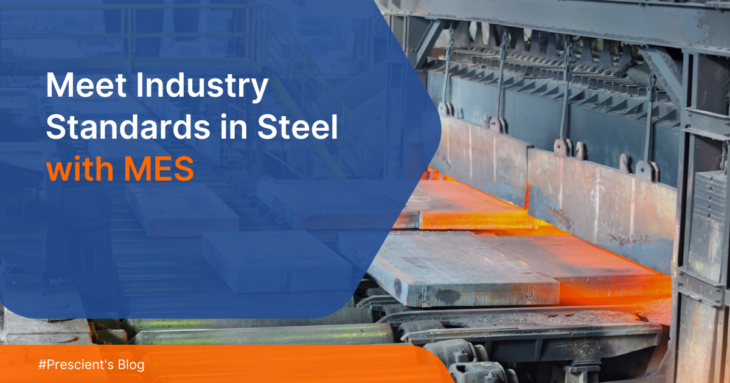Legacy Application Modernization Services: Lift & Shift vs Re‑architecting What’s Right for You?
Why Manufacturers Look at Legacy Modernization Many manufacturers still use old systems to manage core operations. These legacy applications often run on outdated hardware. They use old software platforms. They are hard to update and support. This slows down the business. Legacy systems do not support new technologies well. They block efforts to improve speed, security, and performance. That is why more companies are now considering Legacy Application Modernization Services. They want to move to better platforms, especially cloud-based systems. There are two main ways to do this. One is Lift & Shift. The other is Re‑architecting. These paths solve different problems. This blog explains both. It helps you pick the one that suits your company. What Is Lift & Shift? Lift & Shift is also known as rehosting. It means moving your app to a new place without changing how it works. Most companies move the system to the cloud. But they keep the same setup. This approach is fast. It is easy to start. It works well when you want to reduce hardware risk and cut hosting costs. Benefits of Lift & Shift No change to app structure Fast migration process Works well for simple apps Keeps downtime low Budget-friendly in the short term Drawbacks of Lift & Shift Old problems stay in the system Poor use of cloud features No performance boost Future upgrades can be hard Lift & Shift helps when time is short and the risk must stay low. But it does not help if your app needs to scale or improve in performance. What Is Re-Architecting? Re‑architecting is also called refactoring. It means changing the code and structure of your app. You build the system in a way that fits modern needs. This often includes cloud features and new tools. This path is harder but more useful in the long run. You get better speed, more control, and easier upgrades. Benefits of Re‑architecting Uses cloud power like autoscaling Improves app performance Makes the system easier to manage Removes technical debt Prepares for future changes Drawbacks of Re‑architecting Needs more time Costs more money Requires special skills Some disruption may occur Re‑architecting legacy applications is best when the app is complex. It helps when long-term success matters more than short-term speed. When Should You Use Each Approach? Feature Lift & Shift Re‑architecting Time Needed Short Long Cost Low upfront High upfront Code Changes None Many Cloud Benefits Limited Full Risk Level Low Medium Long-Term Value Moderate High How to Choose What Fits Your Needs Business Goals: Do you want fast cost savings or long-term performance gains? Application Complexity: Is the system simple, or does it have many layers and links? Timeline and Budget: Can you invest more now to save later, or do you need results fast? Team Skills: Do you have in-house support to rebuild parts of the system? Risk Tolerance: Are you open to more change now for bigger benefits later? Other Strategies Besides Lift & Shift and Re‑architecting You are not limited to just two paths. There are more ways to modernize legacy systems. Replatforming: Move to a better platform without changing the app much. Refactoring: Improve the code without a full rebuild. Replace: Use a new tool or SaaS platform instead of the old one. Retain: Keep the app as is and modernize later. These paths may work better when your system does not need much change, or when a new tool offers more value. Why Hybrid Models Work Well Sometimes it helps to mix both lift & shift and re‑architecting. You can lift & shift now to avoid delays. Then, re‑architect later in steps. This reduces risk. It also gives your team time to plan and learn. This phased method helps manufacturers act fast but still build a better system over time. Why Prescient Is your Partner for the Shift from Legacy to Modern Prescient Technologies offers expert Legacy Application Modernization Services. We help manufacturers review systems and plan the best cloud migration strategies. We start with a full system check. We look at cost, speed, and future needs. Then we suggest the best fit. Some apps need lift and shift. Others need full re‑architecting. Prescient supports: Step-by-step cloud migration Secure handling of core systems Smart upgrades for product development tools Advice tailored to your team and goals We have helped many companies modernize legacy systems. We make sure your new setup works better than before. We do not force big changes unless they add value. Want to make smart choices about your old systems? Talk to Prescient. See how our team helps manufacturers move forward without high risk.
Read MoreThe Rise of AI Workflow Agents: What Every Engineering Leader Should Know
Key Takeaways AI workflow agents aren’t just automation; they are smart, learning systems. These agents assist in coding, testing, deployment, and planning. Data quality, integration, and team readiness are critical for success. You need the right AI Agent Development Company to build scalable, secure, and efficient systems. Prescient Technologies helps you bring AI into your workflows without disrupting what works. Why AI Workflow Agents Matter Now You already rely on automation to speed up production or reduce errors. But most systems still wait for human commands. What if your software could think ahead, learn from experience, and act without constant supervision?That’s where AI workflow agents come in. Unlike rigid automation tools, these intelligent agents adapt to changing conditions. They make decisions, run tasks, and help engineering teams move faster with better quality.As a leading AI Agent Development Company, Prescient Technologies sees firsthand how these systems are reshaping how manufacturers build software and products. What Makes AI Workflow Agents Different? AI workflow agents are smart programs that observe their environment and take purposeful actions. They use: Machine Learning (ML) to detect patterns Natural Language Processing (NLP) to understand instructions Deep Learning to improve over time In software development, these agents become active team members. They assist engineers by reviewing code, managing test cycles, or even generating application logic. Unlike traditional tools, they don’t just follow rules; they learn and evolve. Real Impact on Software Teams AI workflow agents are making software development faster and more consistent: Code Generation and Suggestions Tools powered by large AI models help engineers write cleaner code. They offer context-aware suggestions, reduce bugs, and improve readability. Automated Quality Checks Agents can scan thousands of lines of code for issues. They flag security risks or logic errors long before release. Test Case Creation AI tools automatically write tests for new features and run regression checks. This slashes manual testing time. DevOps Support Agents manage repetitive DevOps tasks like merging branches, deploying updates, and monitoring system health. Faster Planning AI reads documents, emails, and user data to suggest product requirements. It helps translate fuzzy goals into structured tasks. These gains show why more companies are partnering with an AI Agent Development Company to embed smart agents into every phase of their product workflows. What Engineering Leaders Need to Know Adopting AI agents isn’t just a tech upgrade it’s a shift in how teams work. Before jumping in, here’s what you should consider: Data Comes First Agents rely on structured, high-quality data. Clean up your data pipelines first so the agents can perform well. Mind the Gaps Legacy tools may not support seamless integration. Choose an AI platform that fits into your stack without forcing huge changes. Privacy and Compliance If your software handles sensitive data, you’ll need policies in place to ensure that AI decisions follow company standards. Bias Awareness AI agents trained on public datasets may reflect bias. Make sure your AI partner validates models for fairness. Team Training Engineers may worry about job security. But AI isn’t here to replace them. It’s here to offload routine tasks so they can focus on creativity and strategy. The Prescient Technologies Edge At Prescient Technologies, our product development solutions help engineering teams evolve with AI. As a trusted AI Agent Development Company, we deliver agents that: Understand and navigate complex product design environments Help your teams move from reactive workflows to proactive problem-solving Reduce development times and improve product quality Fit into existing CAD, PLM, and MES systems with minimal friction Whether you’re building software tools or digital factory systems, we design agents tailored to your ecosystem. Next Steps for Engineering Leaders Ready to test AI workflow agents in your environment? Start small. Pick one pain point code review, testing, or documentation and see how an agent performs.Then scale. Let agents handle higher-value tasks and coordinate across teams. You’ll see reduced errors, faster releases, and happier engineers. Want to know how AI agents can support your engineering goals? Contact us today and explore how our custom product development services can bring these agents to your factory floor or development team.Prescient Technologies delivers more than software; we create intelligent systems that help your business grow.
Read MorePrescient Technologies Unveils New Brand Identity Reflecting Its Vision
Pune, India – 07/04/2025 – Prescient Technologies, a leading provider of advancedtechnology solutions and digital transformation services, today announced the launch ofits refreshed brand identity. The new look and messaging reflect Prescient’s renewedpurpose and evolving role as a future-forward, innovation-driven partner to globalindustries. At the heart of the new identity is a bold, modern logo with a standout orange dot on the“i”—symbolizing the spark of insight, creativity, and human-centric thinking that definesPrescient. The refreshed color palette and clean typography convey trust, clarity, andforward momentum. The refreshed identity is built on four strategic brand pillars—Integrity, Innovation,Infinity, and Impact—represented by the letter “i” in the logo. These pillars reflectPrescient’s approach to building long-term value and lasting partnerships: “These four pillars are not just values—they are the lens through whichwe deliver every solution,” said Deepti Waghmare, Director – Admin, Legal and HR. “Integrity means we stay transparent and accountable. Innovationreflects our passion for bold thinking. Infinity shows our belief inlimitless potential. And Impact is our commitment to real, measurableoutcomes.” said Deepti Waghmare, Director – Admin, Legal and HR. “Prescient has always stood for deep expertise, reliability, andforesight,” said Pravin Waghmare, CEO of Prescient Technologies.“With this new identity, we are embracing the future while staying trueto our core. It reflects how we approach every challenge, every solution, and every relationship.” “This new brand is a reflection of the evolution our customers areseeing in us,” said Ram Deshpande, VP – Sales and Marketing. “Itcommunicates who we are today—agile, future-ready, and deeply committed to our clients’ success. Our brand now mirrors the energy and ambition that drives Prescient forward.” With over two decades of technology excellence, Prescient is poised to accelerate itsglobal reach, expand digital services, and continue empowering organizations acrossmanufacturing, industrial automation, and enterprise software landscapes. Logo Decoded The Prescient logo blends simplicity with significance. Its clean, rounded typographyreflects a modern and approachable personality, while the calming blue symbolizestrust, reliability, and depth of expertise. The standout orange dot on the “i” adds a sparkof creativity—representing insight, agility, and the human touch at the heart of everysolution.The letter “i” in the logo carries deeper meaning—it embodies Prescient’s fourfoundational pillars: 1. Integrity: We uphold transparency, honesty, and accountability in everyrelationship and every solution.2. Innovation: We constantly push boundaries, embrace new ideas, and craftsolutions that shape the future.3. Infinity: Our thinking, solutions, and ambitions are limitless, reflecting our beliefin continuous evolution and boundless possibilities.4. Impact: We focus on delivering meaningful outcomes—creating real value forour clients, communities, and industries. Together, these elements form a bold, balanced, and forward-movingidentity—capturing Prescient’s unwavering spirit and purpose Media Contact: marketing@pre-scient.com
Read MoreEcommerce Product Configurator: Everything You Need To Know In 2025
The ecommerce industry will go through a remarkable transformation in 2025. It is driven by digital innovation and changing consumer expectations. Personalisation has become the new norm as customers increasingly seek tailored shopping experiences. At the heart of this trend are ecommerce product configurators. They are powerful tools that allow consumers to customise products in real-time. These configurators are revolutionising both B2B and B2C commerce. They are effectively closing the gap between customer preferences and business offerings. It is very clear in the fashion and automotive industries. Here, visual configurators have emerged as indispensable tools. They are increasing customer engagement and enhancing sales performance. What Is an Ecommerce Product Configurator? An e-commerce product configurator is a digital interactive tool on an ecommerce website. It enables customers to customise products before buying. Key Features Benefits The Role of Product Configurators in Ecommerce Product configurators meet the customer expectations of personalisation and interactivity. Expectations and Offerings In an era where consumers seek more control, configurators allow businesses to adapt their products to varied customer preferences. Industries Leveraging Configurators Top Features of Modern Product Configurators The latest product configurators incorporate advanced technology to provide seamless user experiences: These features make configurators valuable tools for improving customer satisfaction and operational efficiency. How Product Configurators Drive Sales Growth Visual configurators have a direct and measurable impact on sales performance: Case Studies: Most companies report a 20%–30% conversion rate increase and up to 50% growth in average order values after using configurators for engineering process automation. Overcoming Implementation Challenges While configurators have much potential, their implementation is not simple: Solutions Future Trends of Ecommerce Product Configurators in 2025 The future of ecommerce product configurators will continue changing, with these trends influencing its future: Conclusion In 2025, ecommerce product configurators will be a necessity for businesses seeking to stay competitive. These tools represent a significant leap forward in ecommerce innovation. With increasing consumer expectations, businesses have no choice but to use configurators in order to meet the interactivity and personalisation requirements that their customers are demanding. By doing so, they will increase engagement sales and lead in the fast-paced ecommerce landscape. Revolutionise Your Engineering Processes with Prescient’s Digital Thread Effectively link each aspect of your engineering activities through the Prescient Technologies Digital Thread. With this innovative technology, it enables organisations to automate workflows, eliminate inefficiencies, and increase collaboration through product lifecycles. Whether it is design iteration, real-time data integration, or traceability from concept to production, Prescient’s Digital Thread delivers unparalleled precision and agility. Join the future of engineering process automation, where innovation harmonises with efficiency. Start your journey to operational excellence. Explore Prescient’s Digital Thread today!
Read MoreTypes of Energy Management Systems
Sustainability is now a business necessity. Energy optimisation has become critical for companies across sectors. Rising energy costs and environmental regulations have propelled the adoption of Energy Management System Software. These systems reduce costs and contribute to a greener planet. They ultimately minimise energy waste. Knowing each type of energy management system is crucial to helping businesses improve efficiency and succeed. Let’s look at the applications and the value propositions these systems uphold. What Are the Four Types of Energy Management? EMS belongs to diverse use applications. These mainly include the four types described next: 1. Building Energy Management Systems (BEMS) BEMS optimises energy usage in commercial and institutional buildings. Example: A corporate office using BEMS can reduce energy consumption by 20%. It can change HVAC settings based on occupancy. 2. Industrial Energy Management Systems (IEMS) IEMS is tailored for manufacturing and production facilities. It focuses on reducing energy-intensive operations. Example: 25% of energy usage can be reduced in a factory through predictive maintenance. 3. Residential Energy Management Systems (REMS) REMS for home and housing complexes, wherein smart devices can automatically control the usage of energy Example: A homeowner can save 10% on energy by using a REMS app. The app can time the running of high-energy appliances during off-peak hours. 4. Utility Energy Management Systems (UEMS) UEMS is for utility companies that focus on the grid energy distribution level. Example: A utility company can use UEMS to control peak demand during a heatwave, avoiding power cuts while still being energy efficient. What Are Examples of Energy Management Systems? Energy Management Systems have been applied in many industries: Hypothetical Case: A logistics firm using EMS to monitor and manage warehouse energy usage will reduce its energy costs by 30%. Such is the direct business value offered by the system. How do you select the appropriate EMS? In essence, the features offered by EMS must match the business’s requirements. Some factors that dictate the selection are scalability, real-time analytics, and ease of integration. What Are the Components of Energy Management Systems? Energy Management System Software consists of three essential elements: 1. Real-Time Monitoring 2. Automated Controls 3. Energy Forecasting Value Proposition: These parts collectively reduce operational expenses, ensure environmental compliance, and support sustainability. For example, digital logbooks can record and analyse factory data online, saving thousands of dollars annually in paper resources. What is the Difference Between EMS and SCADA? EMS and SCADA are both critical components of modern industrial operations. However, they serve different purposes: Energy Management System (EMS) SCADA Synergy: EMS and SCADA integrate energy-specific information with comprehensive process control. In doing so, businesses can take full advantage of their resources in a way that leads to enhanced efficiency. How Do EMS Systems Add Value? Energy Management Systems offer quantifiable benefits: 1. Cost Efficiency 2. Improved Operational Efficiency 3. Sustainability Objectives Conclusion Energy efficiency is increasingly becoming a competitive differentiator. Hence, energy management systems are essential for businesses that want to be ahead of their competitors. Integrating digital logbooks and energy forecasting further enhances their effectiveness. Adopting an EMS pays off in the long run. They can help reduce costs and future-proof operations. Transform Your Energy Management with powerCONNECT Take charge of your energy use with powerCONNECT, the latest Energy Management System Software from Prescient Technologies. It is designed to maximise energy usage and achieve sustainability goals. Its features include real-time monitoring and predictive analytics. Both these latest technologies are available with a customisable dashboard. Power up your operations with actionable insights and unmatched efficiency. powerCONNECT is the scalable solution to stay competitive in today’s energy-conscious world. Get on the right path toward your goal of smarter and greener operations. Learn more about how Prescient Technologies can help. Schedule a demo today!
Read MoreThe Impact of MES on Production Efficiency in Steel Industry
In the steel industry, production efficiency comes down to optimizing every aspect of the manufacturing process and not just cutting costs across the plant. While it’s a pressing need for all steel manufacturers, increasing production efficiency is not that straightforward. It involves analysis of each process, optimizing functioning, and reducing waste. If done manually, it’s a daunting task to understand the nuances of inefficiencies of the individual processes and connect them to the whole. However, with an MES in place, the process is greatly simplified. It offers the tools needed to refine operations, streamline processes, and ultimately enhance production efficiency across the plant. In this blog, we take a closer look at MES production efficiency in steel plants. What Does Production Efficiency Mean in the Steel Industry? In the steel industry, production efficiency is more than just producing more steel at a fast rate. High efficiency requires using the machine and resources optimally, reducing waste in the process, and maintaining quality. Generally, production efficiency is measured by the Overall Equipment Effectiveness (OEE). It is a metric that gives how much of manufacturing time is actually productive. If the OEE is 85%, it means that the production line is operating at 85% of its peak potential efficiency. Steel manufacturers face the challenge of balancing high production demands with the need to minimize waste. Achieving production efficiency involves optimizing every part of the production process, from raw material handling to the final product at the end of the line. Key aspects of production efficiency in the steel industry include: In steel plants, production efficiency is a necessity for staying competitive. MES systems play a vital role by providing real-time data, automating tasks, and enabling better decision-making. How MES Increases Production Efficiency So, how exactly does MES production efficiency in steel plants work? MES systems take over the task of gathering real-time data across the plant, which allows decision-makers to plan ahead. It also enables quick corrections when the production deviates from the plan. Its impact is as follows: 1. Improving Workflows With End-To-End Visualization MES systems offer comprehensive end-to-end visualization of the entire production line, which can greatly improve the workflows in steel production. At each stage, the plant managers can monitor the process in real time as they have access to data such as machine performance, material flow, and production rates. With this information, they can spot inefficiencies and bottlenecks and adjust the process so they can reduce waste. For instance, if the rot rolling mill has a breakdown or delay, the operators can slow down other processes at the other ends of the line so work doesn’t pile up at the roller mills. Vision-based inspection can instantly identify anomalous operations or breakdowns to alert operators and take action. The system connects various stages of production to enable smooth transitions and reduce the chances of bottlenecks. 2. Identifying Bottlenecks in Production The MES production efficiency in steel industry can be seen in its ability to reduce bottlenecks. Processes coming to a choking point in a continuous production line are a major problem. When the time to completion is crucial, bottlenecks can cause delays and waste of material, effort, and energy. By continuously monitoring each stage of production, MES provides real-time data that helps identify where these slowdowns are happening. In the factory, if one of the rolling mills suddenly starts underperforming or if there’s a delay in material handling at the casting stage, the MES can flag these issues immediately. Knowing where the bottlenecks are, plant managers can take corrective actions to reduce waste and delays. 3. Training Employees to work with MES By working with advanced MES systems, employees gain hands-on experience that they can apply to individual processes for optimization. Moreover, MES helps employees build production efficiency in the steel factory by encouraging a data-driven approach rather than relying on their hunch or past events. 4. Predictive Maintenance Predictive maintenance is one of the best features of MES and data-driven production. Insights from data can go a long way in enhancing production efficiency in steel plants. Unlike traditional maintenance, which often relies on scheduled downtime or reactive repairs, predictive maintenance uses real-time data to anticipate equipment failures. Predictive maintenance optimizes resource allocation. 5. Identify and Remove Wastefulness MES systems help steel plants identify and eliminate waste by providing real-time insights into every part of the production process. They track material usage, energy consumption, labor efficiency, and process redundancies to help managers spot wastage. For example, MES can reveal where excess materials are being used or where energy consumption can be reduced. 6. Optimize Inventory Management Inventory mismanagement can cost a lot for steel production plants. MES systems optimize inventory management by providing accurate, real-time tracking of raw materials and finished goods. This helps avoid overstocking or understocking where both conditions are detrimental. Closing Thoughts The MES production efficiency in steel industry cannot be understated. The system can be applied to all factors that contribute to production efficiency, such as wastage, energy management, inventory management, and bottleneck elimination. Adopting MES is a crucial step towards achieving greater production efficiency and a competitive edge in the steel industry. Has your plant been reeling under low production efficiency? Discover how FactoryCONNECT can streamline the steel manufacturing processes and reduce waste. Contact us today for a demo of how you can implement an MES in your steel plant.
Read MoreMES and Compliance: Meeting Industry Standards in Steel Manufacturing
Steel manufacturing as an industry is complicated and highly regulated as steel finds applications across all industrial sectors. Steel plants have many moving parts starting from raw material sourcing to final product delivery. When so many processes are going on, it’s easy to deviate from the process and cause poor quality output, accidents, inefficiencies and ultimately financial losses. Compliance with industry standards is crucial to maintain the steel production process safe and profitable. However, meeting those standards requires strict adherence to the procedures at every stage. It is especially difficult when dealing with outdated systems and manual processes. The Manufacturing Execution System (MES), with its superior compliance monitoring capabilities has been a groundbreaking upgrade which ensures quality of work and safety in production. In this article, we’ll take a look at how MES compliance in steel industry works. Industry Standards in Steel Manufacturing The steel industry is governed by a vast range of standards and regulations that define how the quality, safety, and sustainability of steel production should be. These standards are set by different international organizations such as: Some common standards in steel manufacturing include: As can be seen from the requirement of different standards, steel manufacturing has to fall within acceptable criteria of the impact it has on everything. Manufacturers have adhered to the standards even from the days prior to digital transformation manufacturing. But today, with steel manufacturers moving to Industry 4.0, an MES system is a necessity to maintain a high degree of compliance. Challenges in Meeting Compliance in Steel Manufacturing Legacy systems and manual processes in steel manufacturing have their own set of challenges. These are: 1. Inefficient Documentation and Record-Keeping Manual documentation and record-keeping processes are prone to errors. Manufacturers often find compliance gaps because of the mistakes made while writing and copying. The mistakes also show up in audit findings and cause regulatory issues. 2. Lack of Real-Time Traceability and Tracking Without real-time tracking, steel manufacturers have a difficult time monitoring the production processes. The lapses can delay the identification of quality issues and lead to the recall of products. This increases the risk of non-compliance, and quality defects and also poses safety hazards. The bottom line is that it affects customer trust and brand reputation. 3. Inadequate Quality Control Measures Manual quality control measures often lead to variability in product quality. Whole batches then have to be recast again to the right specifications, leading to increased rework costs. Without effective quality control, steel manufacturers risk non-compliance with industry standards and customer specifications. The resulting waste impacts the business’s reputation and revenue. 4. Insufficient Training and Awareness Among Employees Insufficient training and awareness among employees can lead to quality issues and non-compliance, especially when manufacturers hire newcomers. Even with proper training, employees may not fully understand regulatory requirements, industry standards, or company procedures. There is often a ramp-up time before they are familiar with things. This gap gives room for mistakes to be made. 5. Limited Visibility into Production Processes Limited visibility into production processes hinders real-time monitoring of lapses in procedures and protocols. Without clear visibility, steel manufacturers have a hard time identifying bottlenecks, quality issues, and compliance gaps. How MES Addresses Compliance Challenges The MES compliance in steel industry is enabled by the numerous advantages the system brings, such as: 1. Real-Time Data Collection and Tracking With MES, it’s possible to gather data as the process happens, ensuring accuracy and reliability. Instead of manual data entry or delayed reporting by personnel on the ground, the IIoT sensors installed in the plants give a steady flow of data. Real-time data collection and tracking enables operators to respond quickly to quality issues, production bottlenecks, and compliance gaps. 2. Automated Workflows and Quality Control Checks Manual processes are prone to errors and inconsistencies. MES automates workflows and quality control checks, which can increase consistency and accuracy. Automated checks and balances guarantee that products meet quality standards and regulatory requirements. Even data from quality testing, which goes into the system soon after the test, is being analyzed for compliance. 3. Electronic Documentation and Record-Keeping Most technicians and workers will agree that paper based documentation is a compliance nightmare. MES replaces manual records with electronic documentation, which makes accessibility easy and keeps the data accurate. Electronic records are also tamper-proof, version-controlled which increases security. 4. Traceability and Genealogy When quality control fails as a result of non-compliance, recalls of finished product batch take a toll on the costs. MES provides complete traceability and genealogy, which enables rapid identification of affected products. With MES, operators can track raw materials, production processes, and finished goods in real-time. Having this level of traceability can help with prompt recall of the first few products before a whole batch of defective steel is produced. Closing Thoughts The MES compliance in steel industry is a level up as the software comes with features such as quality management, inventory management, production scheduling, reporting and analytics and more. Implementing an MES is a necessity to stay competitive in the growing steel industry today. To learn how you can gain a competitive advantage, check out FactoryCONNECT, a comprehensive MES solution. Get in touch with our team and ask for a demo today!
Read MoreKey Challenges and Solutions for MES Implementation in the Steel Industry
Manufacturing Execution Systems (MES) systems have a proven record of improving manufacturing and production processes across various industries. It adds a bridge between higher planning and management layers to the everyday operations on the shop floor. The benefits of implementation of MES systems also come with challenges as it involves many departments and systems throughout the industry. However, implementing an MES in the steel industry isn’t just about adopting new technology. It’s also about navigating a complex web of challenges unique to this industry. Being one of the oldest industries around, it comes with challenges that can be broadly classified, as we discuss further in this article. The Key Challenges for MES Implementation in the Steel Industry Let’s understand the key challenges in detail below: 1. Challenge: Strategy and Stakeholder Alignment One of the biggest MES implementation challenges in steel is getting everyone on the same page about the project. If the strategy to implement the MES system isn’t clear from the start, confusion is almost guaranteed. Therefore it’s crucial to clearly define what MES for the steel factory will achieve and align it with business objectives so it meets customer needs. But it doesn’t stop there, as getting the stakeholders onboard can be tricky. Getting everyone from the top-level management to the employees and suppliers on board is crucial. Without their acceptance there is a risk of facing resistance, conflicts, or even project failure. Solution: The key to success is strong communication and a well-defined plan. Start by clearly outlining the goals and benefits of MES for the plant. The outcome of implementation needs to align with the manufacturer’s business strategy and not have too much deviation. It’s important to involve all stakeholders in the decision-making process from the start. Engage them in the process by listening to their concerns and demonstrating how MES will make their work easier. By being transparent, it’s possible to progress with the full support of everyone involved. 2. Challenge: Legacy Systems Integration Integrating MES with legacy systems in a steel plant is certainly a daunting task. It’s not just about connecting new software to old hardware. The challenge is that the process can often take longer than anticipated. One of the reasons is that manufacturers of critical machinery that exist in plants, like furnace conveyors, heaters, hydraulic equipment, and cranes, may be reluctant to share data protocols with their hardware. This makes integration even more complicated. The lack of cooperation creates delays, creating MES implementation challenges in the steel industry. Solution: To overcome these challenges, custom sensors and data acquisition modules can be implemented to bridge the gap. Having a custom-designed solution allows you to gather the necessary data without relying on the equipment manufacturers’ cooperation. By integrating these custom modules, it’s still possible to achieve real-time monitoring and control across all systems, even when dealing with legacy equipment. 3. Challenge: Complexity of Data The next significant hurdle in MES implementation is the complexity of data. In a steel plant, the MES system has to deal with data from various sources such as RFID tags, temperature sensors, flow meters, load sensors, and more, all producing data in different formats. A plant can manually work even when there is a lack of standardization, but it can make it difficult for the MES to process and analyze data effectively. The challenge becomes even more pronounced when equipment from different suppliers is involved and each has its unique protocols. Without a unified approach, data compatibility issues can throw a wrench in MES implementation and lead to errors. Solution: The key to solving this problem is implementing a middleware solution that standardizes and harmonizes the data from different sources. By translating disparate data formats into a common language, the middleware enables the MES to process information uniformly regardless of where it comes from. Uniform data is needed for the smooth integration of MES across the plant, which enables real-time decision-making and reduction in errors. With a standardized data flow, the MES can deliver accurate insights and do its job of optimizing the overall efficiency of the steel plant. 4. Challenge: Upskilling Workers and Cultural Shift Introducing an MES system into a steel plant is more than just a technical challenge, it’s a people challenge also. Many workers may have been doing things the same way for years, and suddenly, introducing new technology can lead to resistance. The need for upskilling workers is crucial as many would not be familiar with digital tools or understand MES systems. On top of that, fostering a cultural shift in an industry where employees fear being replaced is challenging. Without proper training and a supportive environment, there are high chances of disengagement which could jeopardize the success of the MES implementation. Solution: The key to overcoming this challenge is a combination of training and open communication. Start by offering comprehensive training programs tailored to different roles within the plant. It means the workers understand not just how to use the MES system, but also why it benefits them. Creating a culture that values continuous learning and innovation can help ease the transition. Engaging workers early on and addressing their concerns builds a sense of ownership and reduces resistance. Encouraging feedback and maintaining transparency also eases fears and apprehensions about the technology upgrade. Closing Thoughts Navigating MES implementation challenges in steel industry is no small feat, but it’s necessary for all the benefits it can bring and to stay relevant in modern manufacturing. By addressing issues like legacy systems, data complexity, and the need for cultural change, you can set the stage for long-term success. Remember, the key is to strike a balance that combines a customized approach to the plant with strong communication and stakeholder involvement. If you are looking to implement an MES for your steel plant, then you’re in just the right place. FactoryCONNECT integrates seamlessly with your existing systems and provides real-time monitoring and complete digital integration. We have expertise integrating our MES platform even with legacy systems that are the hardest
Read MoreTracking Energy and Operations: How Digital Logbooks Complement Energy Management Systems
Effective energy management and sustainability are critical focus areas for modern businesses. Increasingly high energy costs and growing environmental regulations necessitate new software solutions. These software solutions monitor and optimise energy consumption. Energy Management Systems Software has emerged as a critical enabler in achieving sustainability goals. It is complemented by digital logbooks that provide data accuracy and actionable insights. ISO 50001 is an international standard that guides energy management practices. These guidelines help organisations structure and enhance their energy usage. Businesses can reach new heights of efficiency and compliance with their EMS software aligned with these standards. Understanding ISO 50001 Energy Management Standards ISO 50001 offers a systematic framework for organisations to maintain and enhance their energy management systems. It stresses the importance of continuous improvement. It also assists companies in decreasing energy consumption by mitigating greenhouse gas emissions. Purpose ISO 50001 provides a clear guiding framework to monitor and improve energy performance. Alignment with Energy Management System Software Energy Management System software is integrated to automate data collection, reporting, and analysis processes to achieve sustainability objectives. The Role of Digital Logbooks Digital logbooks are crucial in facilitating compliance with ISO 50001. They allow for consistent record-keeping, furnish historical energy data, and streamline audits by guaranteeing transparency in energy reporting. What are Building Energy Management Systems? BEMS offers sophisticated engineered solutions to monitor and control energy consumption inside many facilities. These systems are important in optimising resource utilisation by halting the rise in cost and environmental impact. Definition and Functions BEMS utilise hardware and software that can monitor energy consumption in real-time, control systems such as HVAC or lighting, and identify inefficiencies. Integration with Digital Logbooks BEMS with digital logbooks is a strong energy management solution. Digital logbooks act as a centralised database for energy records, thus allowing historical trend analysis and informed decision-making. For example, a commercial building with BEMS can automatically schedule lighting based on occupancy data and analyse patterns through a digital logbook to improve the system’s performance. Advantages of Digital Logbooks in Building EMS Special Functions of Energy Management Systems Modern EMS solutions go beyond basic energy monitoring, providing advanced capabilities to help optimise operations: These features ensure that companies save energy and maintain smooth and reliable operations. Applications of Energy Management Systems EMS software demonstrates versatility and can be utilised across a multitude of sectors: What to Look for in EMS Software Companies When choosing EMS software, consider the following factors: Digital logbooks and Energy Management System software revolutionise how businesses track energy usage and enhance operations. While EMS platforms such as Power Connect provide real-time energy usage, automation, and predictive maintenance monitoring, digital logbooks offer even more precise data and historical insights, which are crucial for compliance and informed decision-making. Together, these form a robust solution for firms seeking operational efficiency and sustainability. Prescient Technologies’ Power Connect EMS platform and Digital Logbook provide an all-inclusive energy management solution designed specifically to address your business’s unique needs. Whether you need to comply with ISO 50001, improve energy efficiency, or make informed decisions based on data, this holistic system empowers your business to achieve superior performance levels. Discover the Power Connect EMS platform and Digital Logbook from Prescient Technologies. Learn how they can revamp your energy management approach. Take your first steps toward smarter, more sustainability-friendly operations by reaching our experts or scheduling a demo.
Read MoreImproving Supply Chain Management with MES in Steel Industry
Steelmaking or production is a continuous process. The raw materials must continuously come into the plant to produce finished products like bars, slabs, wires, tubes, beams, etc. To sustain the production, it is necessary to ensure that the supply chain stays consistent and maintains the pace set. Supply chain management, in simplest terms, involves everything starting from procurement of coal and ore and steel production to warehousing, transportation and even delivery of finished products. To maintain a functioning state, every step of the supply chain needs to be well coordinated. However, with the complexity and scale of steel production, the flow can sometimes have missteps that can cause delays. MES helps streamline and optimize supply chain processes by providing real-time visibility and better coordination. In this blog, we’ll explore how MES supply chain management in steel significantly improves supply chain management in the steel industry. Understanding Supply Chain Management in Steel Industry Supply chain management in the steel industry involves overseeing the flow of materials, information, and finances from raw material suppliers to the end customer. It’s a complex network where efficiency directly impacts production costs and delivery times. In steel manufacturing, supply chain management is vital because it ensures the timely availability of raw materials like iron ore, coal, and scrap metal and coordinates their processing into finished products. The key components of the supply chain include: 1. Raw Material Procurement Purchasing is another vital business operation that refers to the timely and cost-effective purchase of basic materials such as iron ore, coal, and scrap metal, among others. A stable network of suppliers is mandatory to avoid interruptions because the production mode that is dominant among manufacturers is the just-in-time production mode. This step is basically meant to cut down the total expenses by purchasing the materials at the lowest price and in the right quantity. 2. Production Scheduling Production scheduling is coordinating manufacturing activities efficiently. It involves aligning resources such as machinery, inventory, and workforce to meet manufacturing deadlines. Proper scheduling is necessary to avoid bottlenecks and ensure a smooth production that balances demand with available capacity. 3. Inventory Management Maintaining optimal inventory levels is essential to avoid overstocking or stockouts, which can incur unnecessary costs for the plant. Effective inventory management enables steel plants to balance supply with demand. 5. Distribution Logistics The transportation and delivery of finished steel products to customers is one of the central aspects of the supply chain. Efficient logistics is necessary for timely delivery. Also, optimizing delivery with production can reduce transportation costs and help maintain strong customer relationships. How MES Improves Supply Chain Management Considering the aspects of a supply chain earlier, it’s clear that MES has numerous advantages. Here is how MES supply chain management in steel industry is beneficial. MES Gives End-To-End Supply Chain Visibility MES systems give complete supply chain visibility by offering real-time tracking of materials and products. Using different tracking methods ranging from RFID tags to indoor tracking systems, plant managers are able to monitor every stage of the supply chain. They have a complete view from the raw material procurement to the delivery of the final product and its movement in between. With access to the latest information on the state of production, decisions can be swiftly made. Consider the case of a material arrival delay. The production schedule can be adjusted to accommodate the delay when production planners get the information earlier. End-to-end visibility also helps identify potential disruptions before they escalate. Optimizing Procurement and Inventory Management MES can play a crucial role in procurement and inventory management. The real-time data it gives on material usage and inventory levels helps optimize procurement processes. The system ensures that all the materials are ordered at the right time to maintain production. This prevents delays and bottlenecks in production. When it comes to inventory management, MES is constantly tracking the stock levels. It can generate a procurement order by balancing all the factors, such as the requirement, market price, and market availability. With advanced analytics, it would also be able to predict and buy at the best price to lower costs. Optimizing Production Scheduling and Coordination Production scheduling is also an area where MES supply chain management in steel can outperform manual planning of production. The system has all the data on machine performance, material availability, pending orders, work in progress, completed deliveries, and workforce capacity. The information can be used to schedule production optimally. It can also streamline production in case of a bottleneck or breakdown. If one of the hot rolling mills breaks down, the MES can immediately make changes up the stream in casting, melting and material handling until it is fixed. If one part of the plant is experiencing a delay, MES can adjust the workflow to prevent bottlenecks in case production can’t be slowed. Data Analytics for Production Efficiency The MES system works with vast amounts of data; hence, it has a reservoir of information on trends, which can be used for analysis and making predictions. By analyzing data from every stage of production, MES can pinpoint where delays, waste, or resource mismanagement occur regularly. For example, if raw materials are consistently delayed, MES can analyze supplier performance, identify challenges, and offer solutions. On the other hand, if the plant notices a recurring issue with excess inventory. MES can analyze associated trends and show when and why overstock happens. The same level of analysis can be applied at every stage to increase production efficiency. To Wrap it Up Improving supply chain management is essential for maintaining competitiveness in the steel industry. With MES, steel industries gain real-time visibility, optimize their procurement processes, and leverage data analytics to make informed decisions. With MES supply chain management steel, they can create efficient supply chains that reduce waste and enhance production. To gain complete insight into your plant’s supply chain, consider FactoryCONNECT. Our MES solution is tailored to meet the unique demands of the steel industry. It provides end-to-end visibility and enables data-driven decision-making.
Read More







